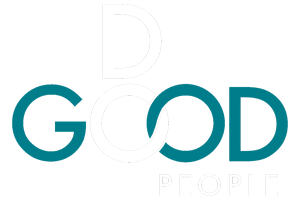Table of Contents
The traditional C-suite is being reshaped. Faced with rapid digital transformation, mounting sustainability pressures, and evolving workforce expectations, companies are expanding their leadership teams beyond the usual suspects: CEO, CFO, COO, and CHRO.
New roles like the Chief Transformation Officer (CTO), Chief Experience Officer (CXO), and Chief Sustainability Officer (CSO) are emerging to drive innovation, deliver stakeholder-centered experiences, and embed ESG goals into business strategy.
This article explores how and why these roles are taking center stage, and what it means for the future of executive leadership.
The evolution of the C-Suite
For decades, corporate leadership was centered on a core team of executives whose responsibilities were tied to finance, operations, people, and growth. However, this traditional structure often failed to address cross-functional challenges such as sustainability integration, digital reinvention, or holistic stakeholder experience.
These gaps have become more visible as organizations struggle to adapt at speed and remain relevant in a purpose-driven, rapidly digitizing world.
Here are some of the key drivers of change that are reshaping the executive table:
Digital acceleration and the pressure to modernize internal processes
ESG expectations from investors, regulators, employees, and consumers
Hybrid work models and rising demand for employee and customer-centric strategies
The need for agile, cross-functional transformation
Empower employees to contribute to the ESG strategy
Emerging C-suite positions
Chief Transformation Officer (CTO)
The Chief Transformation Officer is tasked with driving large-scale change initiatives across the organization. This includes digital transformation, restructuring, and new business model design. Unlike a COO, the CTO’s role is change-focused, with a mandate to break down silos and align all efforts to a common strategic vision.
In volatile markets, transformation isn’t optional, it’s a survival imperative. The CTO provides leadership continuity, oversees execution, and ensures the transformation is both scalable and sustainable.
According to McKinsey, companies that appoint a dedicated transformation leader are “2.4 times more likely to outperform peers” during change initiatives.
Chief Experience Officer (CXO)
The Chief Experience Officer champions both customer and employee experience across the business. This role is about breaking the walls between departments, aligning product, service, marketing, HR, and operations to deliver seamless, emotionally resonant experiences.
Responsibilities often include:
Designing journey-based interactions for customers
Developing strategies to boost employee engagement and loyalty
Harmonizing digital and physical experience channels
In the experience economy, experience is revenue. In fact, PwC found that 73% of consumers say experience is a key driver in purchasing decisions, even over price or product. CXOs help organizations build brand trust, reduce churn, and differentiate in saturated markets.
Chief Sustainability Officer (CSO)
The Chief Sustainability Officer leads the strategy and implementation of a company’s environmental, social, and governance (ESG) commitments. Their scope spans from carbon footprint reduction to diversity and inclusion, circular economy strategies, and reporting compliance.
Beyond regulatory pressure, investors increasingly reward companies with credible sustainability practices. The CSO ensures sustainability is not a side initiative, but a core strategic driver.
Harvard Business Review reports that CSOs today play a “board-level strategic role”, often shaping investor relations and product innovation alike

Integrating innovation and sustainability in leadership
Innovation and sustainability are not competing priorities, they are mutually reinforcing. Sustainability goals demand innovation in materials, processes, logistics, and employee behavior. Meanwhile, innovative companies often lead in ESG performance because they’re faster to adopt responsible practices and technologies.
A cohesive C-suite needs to build a common narrative where transformation, experience, and sustainability are linked to business outcomes, talent attraction and market differentiation.
Despite their value, these roles often face barriers, like, for example:
Overlapping with existing functions (e.g., COO, CMO, CHRO)
Facing resistance to cultural change
Having difficulties measuring impact in short financial cycles
To succeed, organizations must clearly define responsibilities, align KPIs with cross-functional goals, and empower these leaders with real decision-making authority.
The future of executive leadership
As stakeholder capitalism grows, leadership will need to be more transparent, responsive, and inclusive than ever before. We can even expect new and more specialized roles to emerge, such as Chief Purpose Officer, Chief Ethics and Trust Officer, or Chief AI & Data Ethics Officer.
But, no matter the role, one thing is clear, organizations should begin developing internal pipelines for these roles today, integrating sustainability, innovation, and experience into leadership development programs and succession planning.
Future C-suite leaders must:
Be systems thinkers with tech fluency
Understand ESG frameworks and stakeholder engagement
Excel in collaboration, storytelling, and change navigation
All in all, the C-suite is no longer a static leadership circle. Companies are embracing new emerging roles not just to fill gaps, but to lead with relevance, resilience, and responsibility.
Organizations that evolve their leadership teams accordingly are not just adapting to change, they are defining the future of sustainable business performance.







